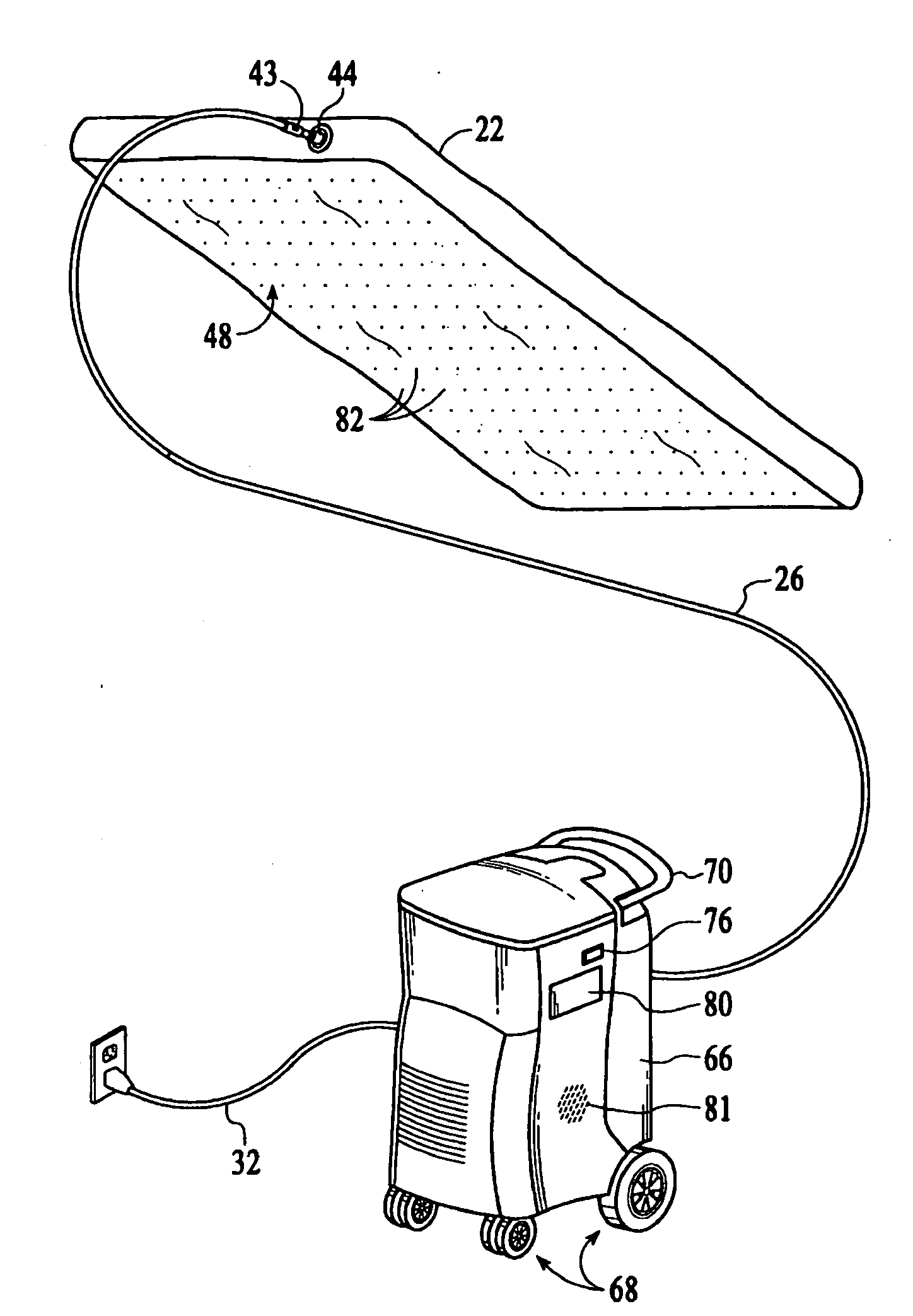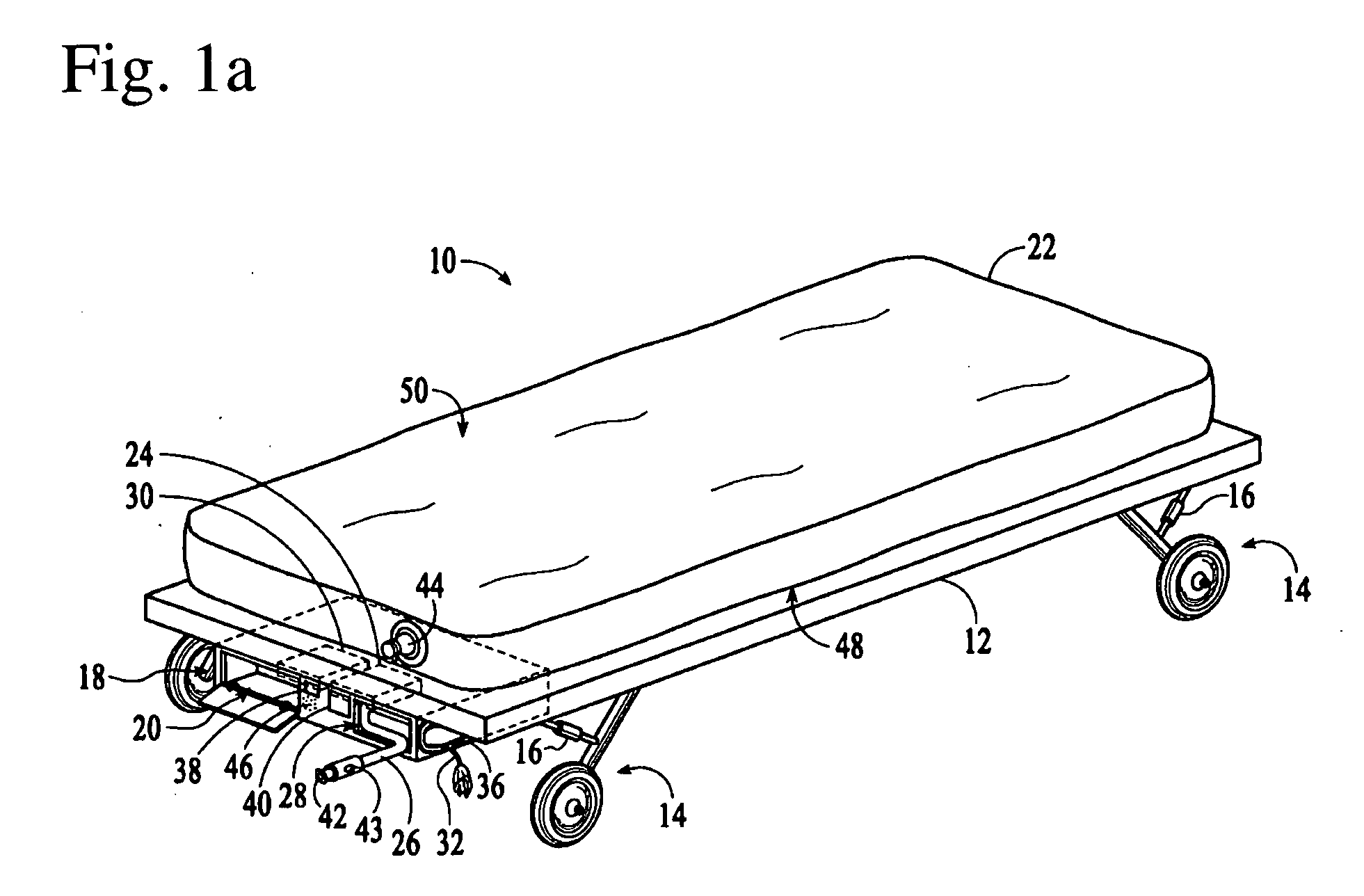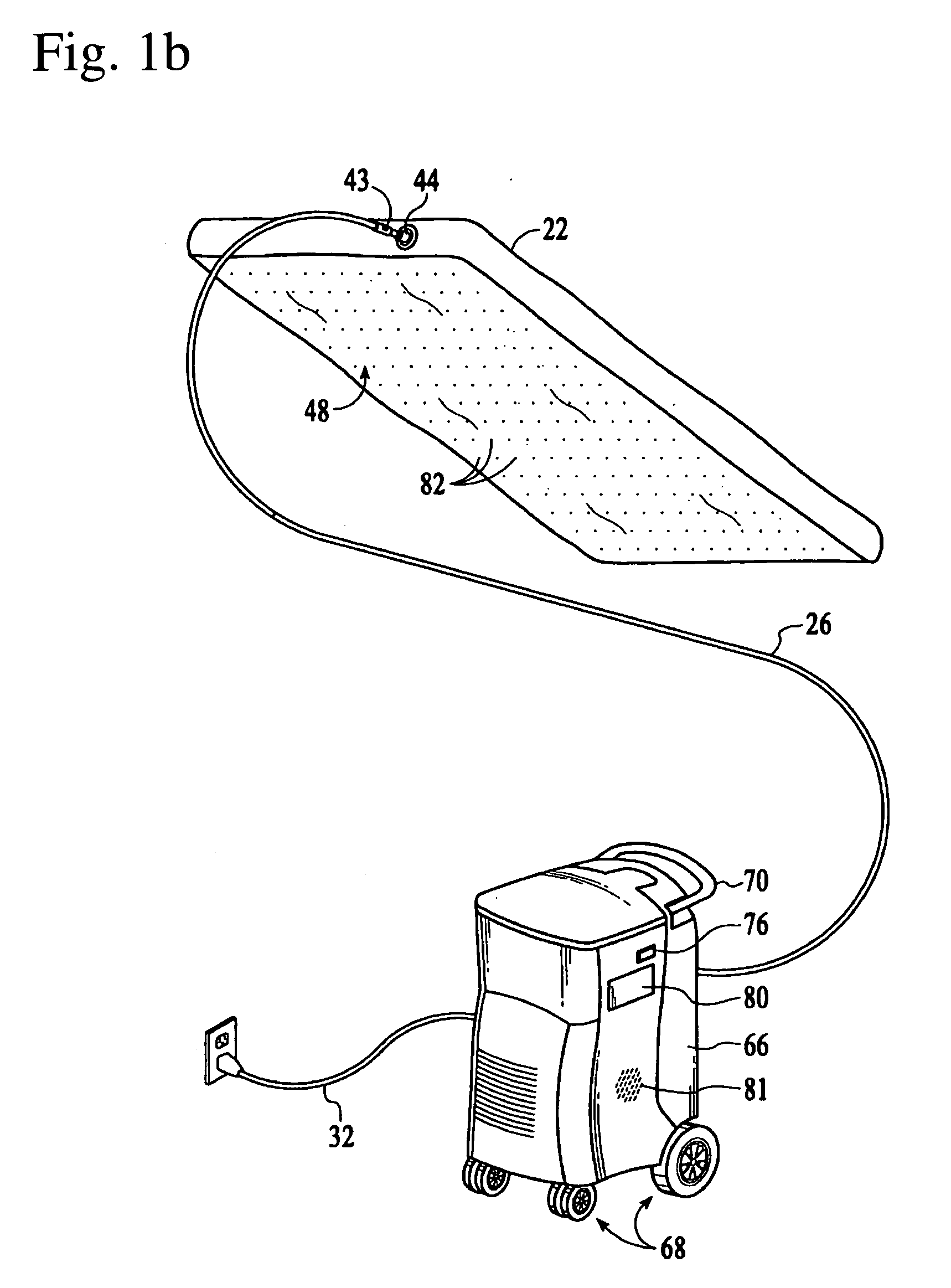Patient lifter with intra operative controlled temperature air delivery system
a controlled temperature air delivery and patient technology, applied in the field of patient lifter mattresses, can solve the problems of patient injury, difficult and poorly controlled lateral transfer procedures, and resistance to employing disposable lateral transfer devices for single use, so as to facilitate patient transfer, reduce friction for lateral displacement of mattresses, and save the difficult work of moving patients
- Summary
- Abstract
- Description
- Claims
- Application Information
AI Technical Summary
Benefits of technology
Problems solved by technology
Method used
Image
Examples
first embodiment
[0043]FIG. 2 illustrates at 200 the subject invention. Mattress 101 generally is provided with a top chamber 120 and a bottom chamber 121. Mattress 101 includes a bottom surface 102, a top surface 103, and a separation barrier 104 between the top chamber 120 and 121. Top surface 103 is appointed with apertures 105a and 105b therein. Generally, apertures 105a, located near the head portion of the mattress 101, are larger than apertures 105b located at the foot portion of mattress 101, delivering a higher quantity of comfort air to the upper portion of the body. The apertures 105a and 105b may be selected to be of equal size without departing from the scope of the invention. Low pressure compressed heated or cooled air supply to the top chamber 120 is provided through a hose attached to inlet 106. P indicates a pressure source and the circle with an arrow indicates a regulator. The heated or cooled air travels through the top chamber 120 and is delivered through the apertures 105a and...
second embodiment
[0056]In a second embodiment, the mattress having a bottom chamber comprising two laterally separated compartments, each being provided with an individual regulated compressed ambient air supply, for collapsing one side to facilitate rolling of said patient onto an operating table or bed.
[0057]Advantageously, the Patient Lifter with Intra Operative Heater System provides:
[0058]i) a combination system with operative heater that delivers a warm or cold air stream surrounding a patient while apertures on the top surface are blocked by the patient, and a patient lifter / patient transport device;
[0059]ii) an intra operative heater device that delivers heat from beneath a patient and can be used without a tent, the system having surgical drapes that are placed above the patient and function as a cover when heat is delivered from beneath the patient;
[0060]iii) an air-cushion forming mechanism for developing compressed ambient air pressure that is increased to a pre-selected high pressure, d...
PUM
 Login to View More
Login to View More Abstract
Description
Claims
Application Information
 Login to View More
Login to View More - R&D
- Intellectual Property
- Life Sciences
- Materials
- Tech Scout
- Unparalleled Data Quality
- Higher Quality Content
- 60% Fewer Hallucinations
Browse by: Latest US Patents, China's latest patents, Technical Efficacy Thesaurus, Application Domain, Technology Topic, Popular Technical Reports.
© 2025 PatSnap. All rights reserved.Legal|Privacy policy|Modern Slavery Act Transparency Statement|Sitemap|About US| Contact US: help@patsnap.com



